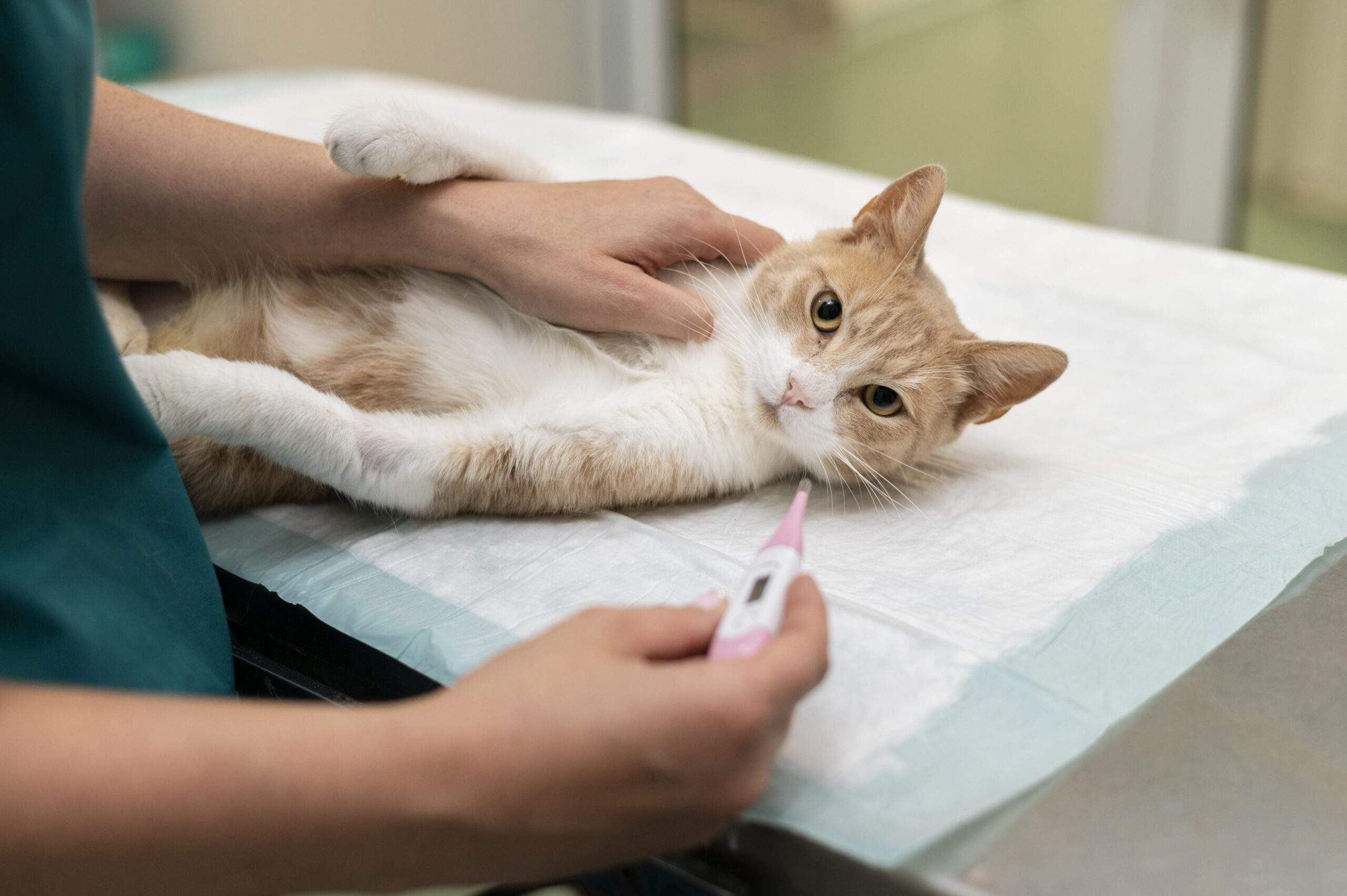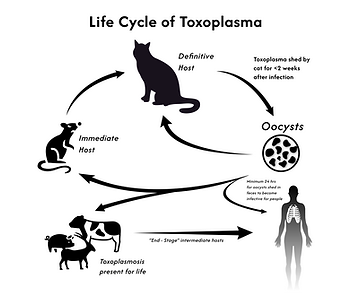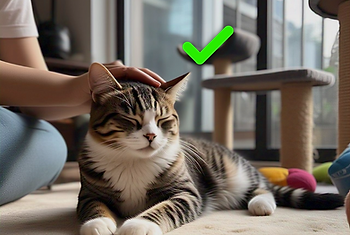Introduction In the realm of logical reasoning, one topic recurs frequently in exams, puzzles and everyday thinking that is blood […]
Cats, Toxoplasmosis, and Pregnancy: Do I Have to Shun My Cat?

Introduction
Toxoplasmosis is a worldwide zoonotic infection affecting animals and humans. It is caused by a protozoan parasite, viz., Toxoplasma gondii. It is one of the most widespread parasites in humans, with serology showing that up to one-third of the human population will carry it at some point. Most toxoplasmosis in healthy hosts is asymptomatic or mild. But the primary infection of T. gondii within a pregnant woman can cause transplacental transmission to the embryos, which can lead to hydrocephalus, microcephaly, blindness, miscarriage, or even death of the fetus itself.
Disease Transmission

T. gondii infects all mammals that serve as intermediate hosts. As definitive hosts cats are key and the only to shed oocysts in their feces that become infective in soil, food and water. The infection can develop in only those cats that eat tissue cysts. This condition is primarily seen in outdoor hunting cats that eat rodents and are fed raw meat by owners. An outdoor hunting cat is typically infected with the parasite as a kitten and therefore not likely to be a carrier for the infection as an adult. Cats can shed millions of oocysts for a short period (1–2 weeks). These oocysts remain stable in the environment for several months but are thermo-labile and can be killed at 70 °C for 10 minutes. Clinical signs in infected cats include depression, anorexia, and fever, with possible progression to peritoneal effusion, hypothermia, jaundice, and dyspnea. Other symptoms of toxoplasmosis are diarrhea, weight loss, seizure, ataxia, pancreatitis, and uveitis. Once a cat becomes infected with toxoplasmosis, it is usually immune to re-infection. Thus, a cat is unlikely to shed potentially infectious oocysts unless they are exposed to T. gondii for the first time. Furthermore, these oocysts become infective after an incubation period of one to five days.
Transmission to humans
Broadly, toxoplasmosis can be contracted by humans in three ways:
a) Eating under-cooked meat
The risk of becoming infected with Toxoplasma can be avoided by adhering to normal food preparation habits like avoiding the intake of raw or undercooked meat, poultry, and seafood. Since T. gondii is most effectively spread through ingestion of microscopic cysts in the organs of infected prey, freezing meat for some days at extremely low temperatures (−18 °C) before cooking may degrade all cysts. Whole red meat cuts must be cooked to an internal temperature of at least 63 °C when being cooked. All poultry should be cooked to an internal temperature of at least 71 °C. After cooking, a rest period of 3 minutes should be allowed before actual consumption.
b) Oral consumption of infective oocysts
Toxoplasma infection can be transmitted by the direct ingestion of oocysts shed into the environment from cat feces, which may contaminate water, soil, and vegetables. Infections caused through the ingestion of oocysts are considered more severe clinically in intermediate hosts than those related to the ingestion of tissue cysts.
c) Transplacental transmission
A mother can pass the disease to her fetus via the placenta if she develops a primary infection during pregnancy. The severity of the disease is influenced by the trimester in which the infection is acquired by the mother. When the mother is infected in the first trimester of pregnancy, abortion or stillbirth can occur. When mothers acquire their first infection in the second or third trimester, only 15% and 5% of children, respectively, may be born with a subclinical infection. Because cats cannot easily transmit toxoplasmosis directly to their owners, pregnant women are unlikely to get the disease from their pet cat. A woman would have to get feces containing oocysts from the litter box, then put her hand to her mouth or in some other way bring the contaminated material into her digestive system without first washing her hands to become infected with toxoplasmosis. It has been observed that if the litter box of the cat is cleaned daily, exposure becomes unlikely since the oocysts are infective only after one to five days.
Reducing Your Risk of Toxoplasmosis
If you are a pregnant cat owner, follow the below-mentioned precautions to avoid getting toxoplasmosis.
• The litter box should be emptied and cleaned daily.
• Cover the sandboxes with a tight lid during those times when the kids are not using them so that cats do not turn the sandboxes into a litter box.
• While handling dirt, soil, or manure, you should wear gloves. Further, make certain to wash your hands thoroughly once you have gotten in contact with such material.
• It is important that during pregnancy someone else, like your spouse, a friend, or a neighbor, take care of the litter box cleaning. Further, make sure you use rubber gloves to replace the litter box and wash your hands meticulously.
• Ensure rinsing of all raw vegetables thoroughly. Additionally, the cutting boards and kitchen items are to be washed and disinfected.
• Discard raw or undercooked meat. Cook all the raw meat to an internal temperature of at least 63° C followed by a rest of 3 minutes before actual consumption. All the ground meat and wild game should be cooked to an internal temperature of atleast 71º C.

You do not have to get rid of your cat!
The risk of becoming infected with the parasite by merely touching an infected cat is low, as they do not usually carry the parasite on their coat. Having a cat has immeasurable advantages in terms of companionship and affection. While cats can pass toxoplasmosis, the risk of your cat infecting you is low, provided you follow the advised precautions. So your cat may remain a treasured member of your family until the time you want.
Can toxoplasmosis be cured?
Yes, toxoplasmosis can be treated. It has been observed that mild illness in healthy individuals resolves spontaneously within weeks to months without any treatment. However, treatment should be considered in healthy individuals affected with the ocular form of the disease. Healthy pregnant women can be treated if infected with toxoplasmosis, thus protecting the fetus from the disease. Mother and infant must be kept in constant surveillance throughout the pregnancy and following the birth of the baby.
Is there a vaccine for Toxoplasmosis?
Currently no licensed human vaccine against Toxoplasma gondii is available. However, the development of human vaccines is in progress. A licensed live vaccine, marketed as Toxovax (distributed by MSD Animal Health), is available for sheep, which gives them immunity for life. No commercially licensed vaccine to immunize against T. gondii infection is available in cats. Feline vaccines against toxoplasmosis are under investigation.
References
- Cenci-Goga, B.T., Rossitto, P.V., Sechi, P., McCrindle, C.M. & Cullor, J.S., 2011, ‘Toxoplasma in animals, food, and humans: An old parasite of new concern’, Foodborne Pathogens and Disease 8, 751–762.
- Dubey, J.P. & Jones, J., 2008, ‘Toxoplasma gondii infection in humans and animals in the United States’, International Journal for Parasitology 38, 1257–1278.
- Dubey, J.P. & Lappin, M., 2006, ‘Toxoplasmosis and neosporosis’, Infectious Diseases of the Dog and Cat 3, 754–774.
- Havelaar, A., Kemmeren, J. & Kortbeek, L., 2007, ‘Disease burden of congenital toxoplasmosis’, Clinical Infectious Diseases 44, 1467–1474


